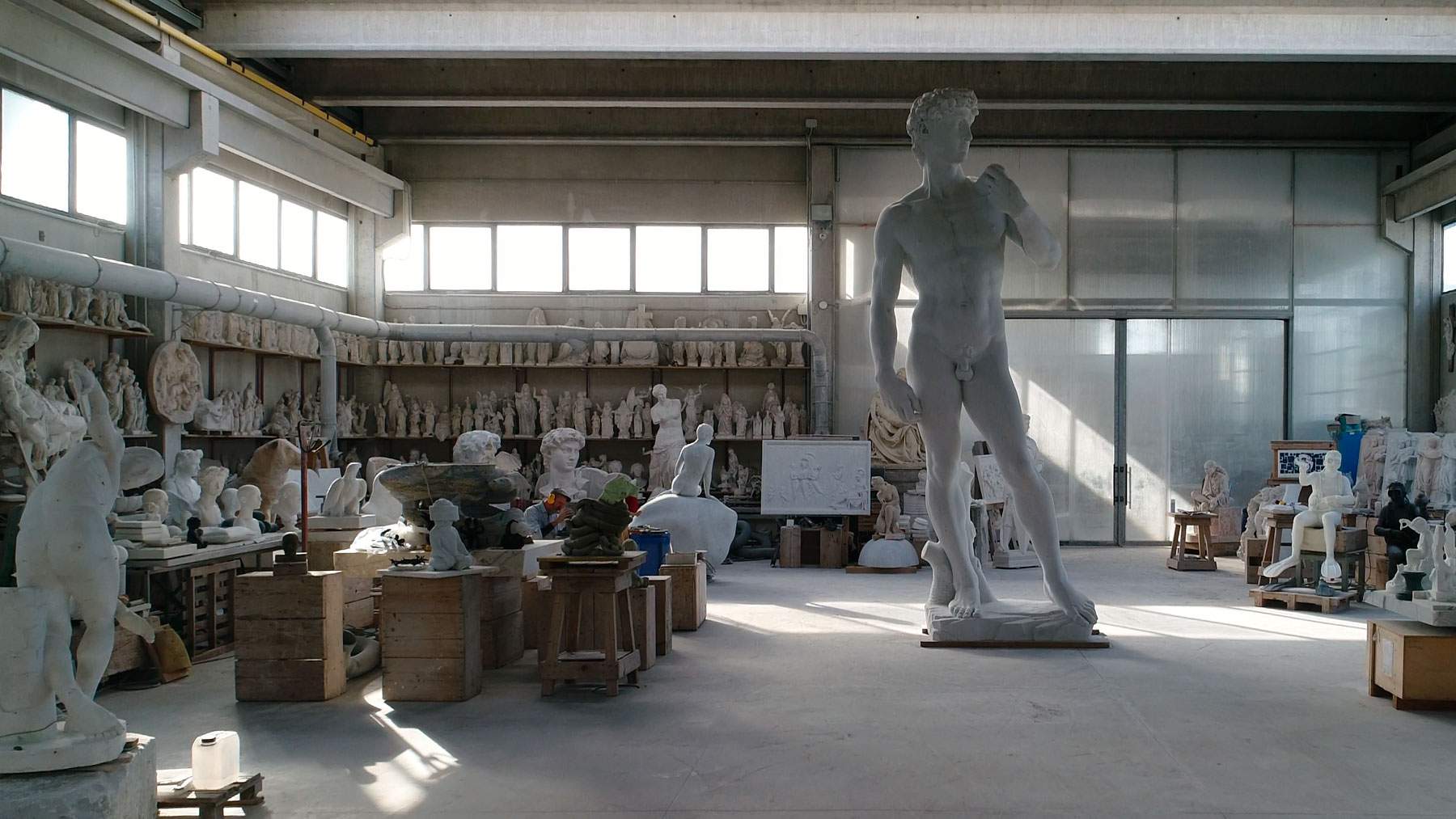How is great art born? On Rai 5 the documentary "The Hands of Art" by Rocca and Giannini
On Friday, July 23, Rai5 will premiere the documentary Le mani dell’arte, by Daniele Rocca and Federico Giannini (editorial director and editor-in-chief of Finestre sull’Arte, respectively), directed by Daniele Rocca, after the fifth episode of the second season of Art Rider. The documentary answers a specific question: whose hands materially make a work of art today? Perhaps not everyone is aware that the material executors of the great works of contemporary art we find displayed in museums and exhibitions are not the ones who appear on the caption. In fact, for centuries artists have been getting help for the realization of their ideas from highly skilled craftsmen whose existence the general public ignores. Not only that, in the contemporary era there are numerous artists celebrated by international critics who do not even “touch” the work during the stages of its making.
Today, the great artists of international contemporary art, celebrated by the market and critics, are often not the material authors of the works that are presented to the public under their own name: in fact, there are many world-renowned artists who, in order to create some of their works, make use of the collaboration of capable artisans, ready to follow the artist’s instructions. Thus, within some highly specialized workshops, the works we see in museums around the world, at exhibitions, during major international events, at fairs, or in some prestigious private collection take shape.
But contemporary artists are not the only ones who have found valuable support in their many collaborators working in anonymity. Giotto, Verrocchio, Michelangelo, Bernini, Canova, Thorvaldsen, and other great artists of the past were surrounded in their workshops and ateliers, in some cases even by dozens of young artisans, apprentices, workshop boys: some of whom proved so skilled and talented that they became artists themselves. Consider, for example, the case of Leonardo da Vinci, who began his career, very young, as a collaborator of Verrocchio: his talent, in our imagination, even managed to overshadow the master’s work to some extent. But it is also thanks to the work done during his apprenticeship that Leonardo became the great artist the whole world knows today.
Centuries have passed, but even today Italy boasts a tradition of skilled and unknown artisans who lend their talents and hands to the great names of international art, who decide to come to Italy of all places to entrust their ideas and visions to skilled craftsmen, custodians of ancient techniques and centuries-old traditions. International artists tell why they decided to have their works made in Italy, what they found in our country, and how they dialogued with the master craftsmen.
The Hands of Art proposes a journey between two of the most important artistic districts in the world, that of Carrara and that of Pietrasanta, where marble and bronze have for centuries been sculpted and shaped by invisible hands, at the service of artists past and present, to give voice to those silent protagonists of art to whom the general public rarely turns a thought, and of whom it probably often even ignores the existence. A journey that then ends in the Romagna of ceramics, another artistic district of great importance, where we will show how the least noble of materials, clay, which human beings have used since prehistoric times, using it for the production of dishes and tableware, manages to transform and elevate itself into dazzling works of art. And finally, the tale of the man who, after lending his hands for years to established international artists, decided to leave the life of a craftsman and become an artist himself.
Below are some stills from the documentary.
 |
| Frame from the documentary The Hands of Art |
 |
| Frame from the documentary The Hands of Art |
 |
| Frame from the documentary The Hands of Art |
 |
| How is great art born? On Rai 5 the documentary "The Hands of Art" by Rocca and Giannini |
Warning: the translation into English of the original Italian article was created using automatic tools. We undertake to review all articles, but we do not guarantee the total absence of inaccuracies in the translation due to the program. You can find the original by clicking on the ITA button. If you find any mistake,please contact us.




























